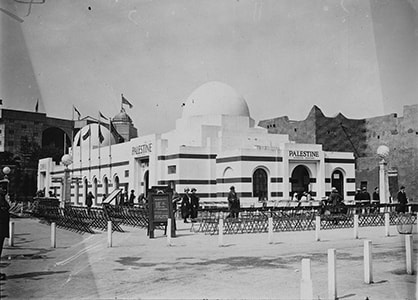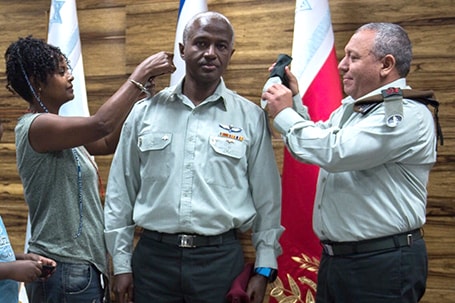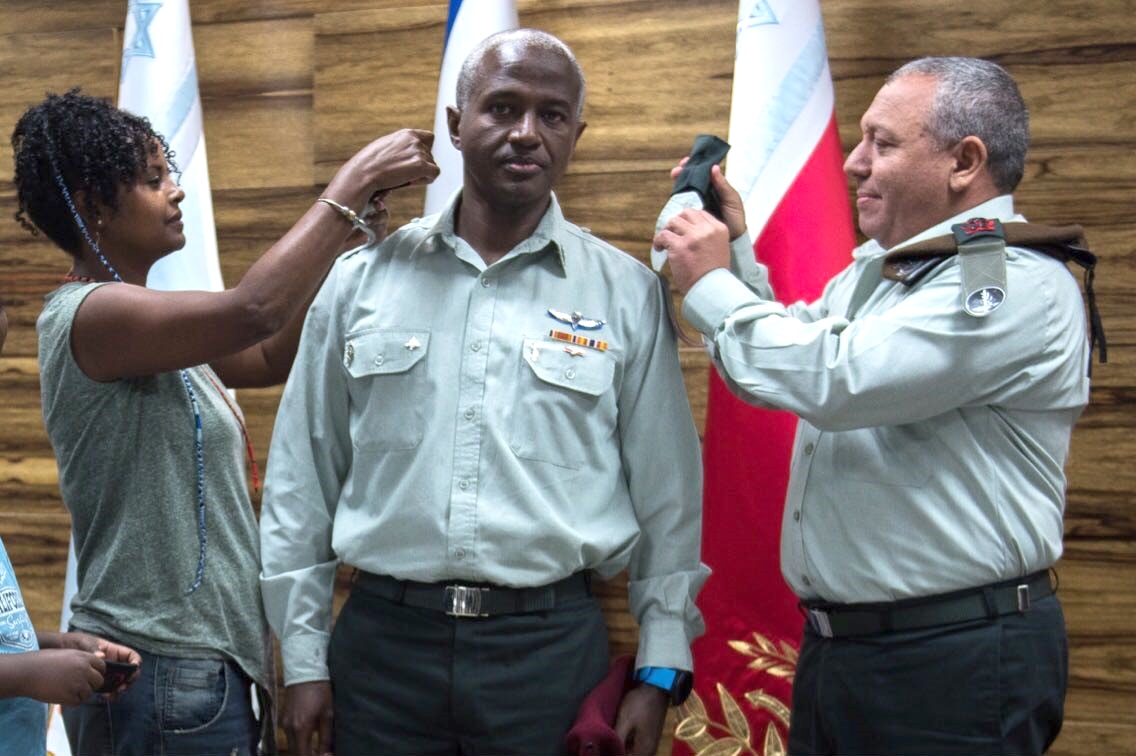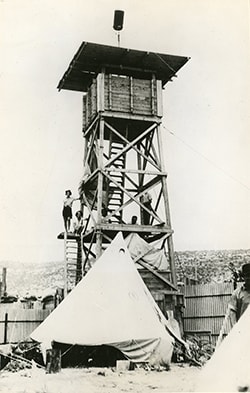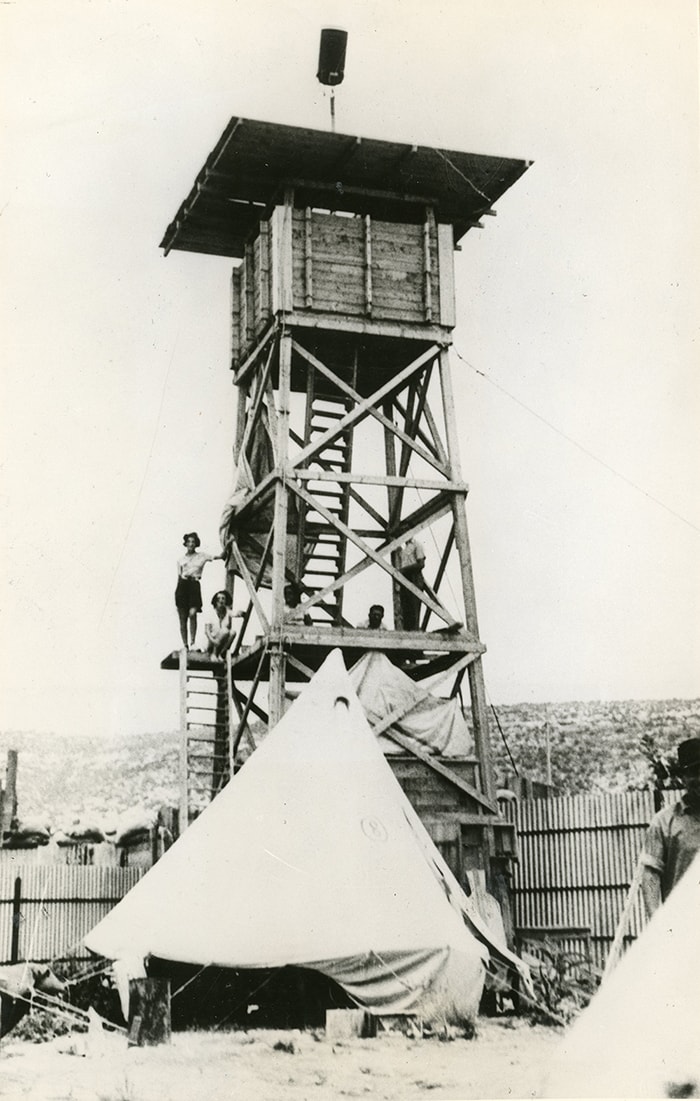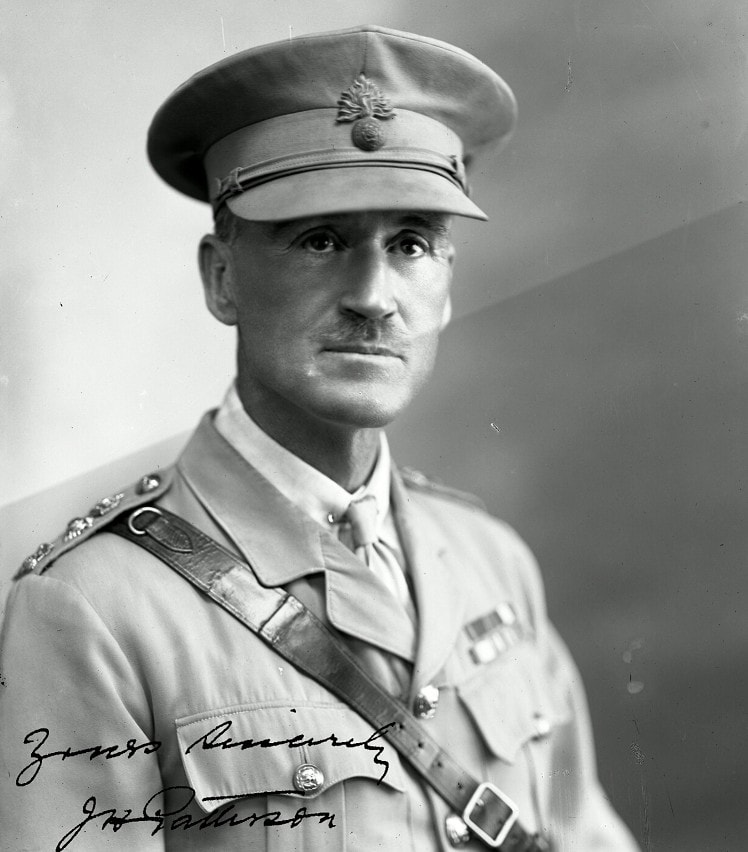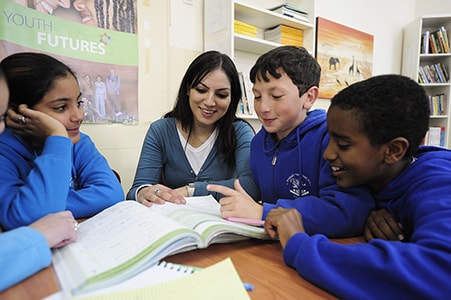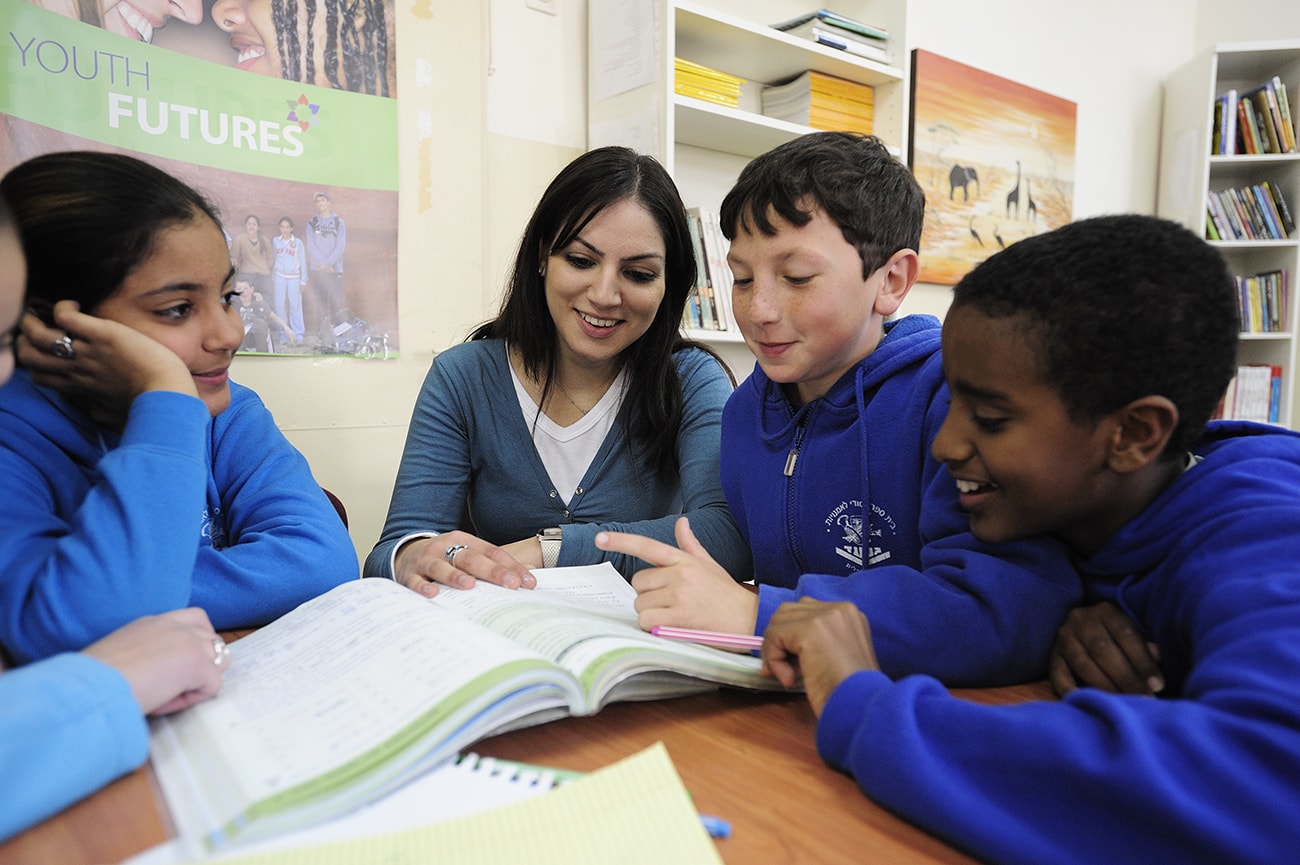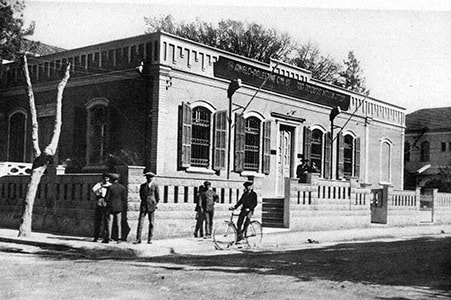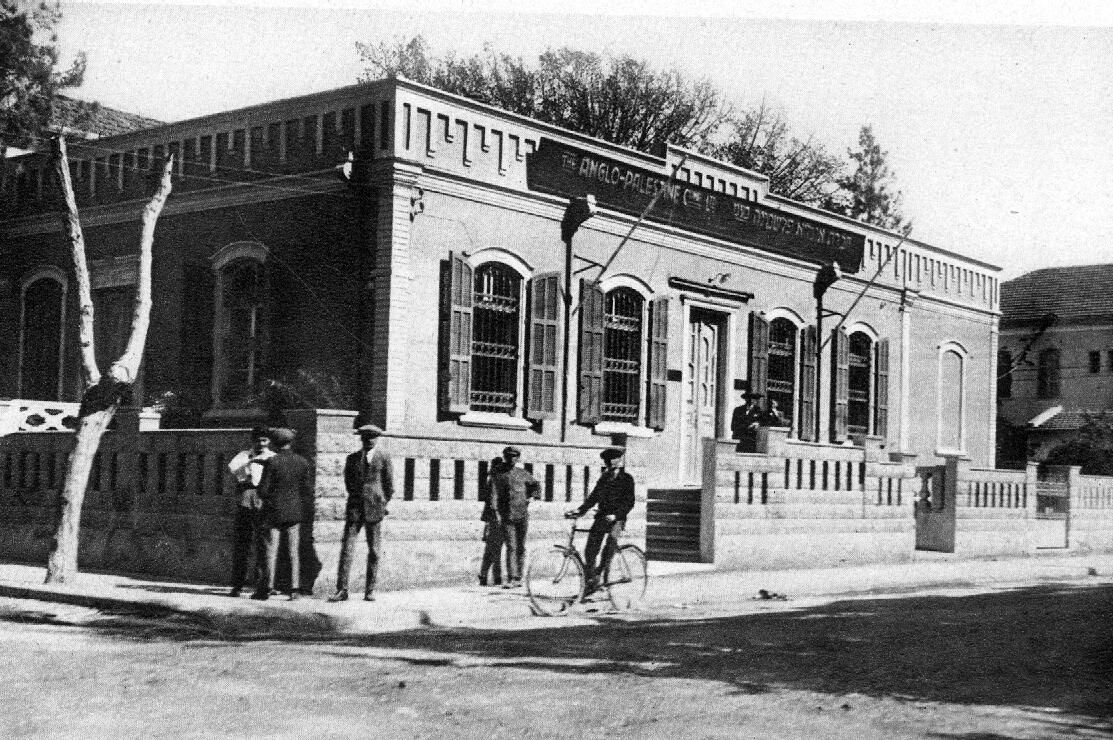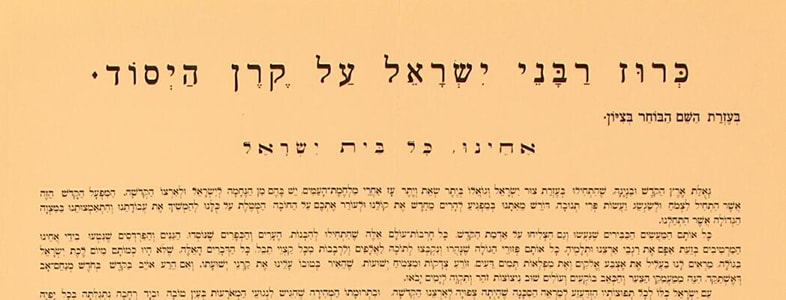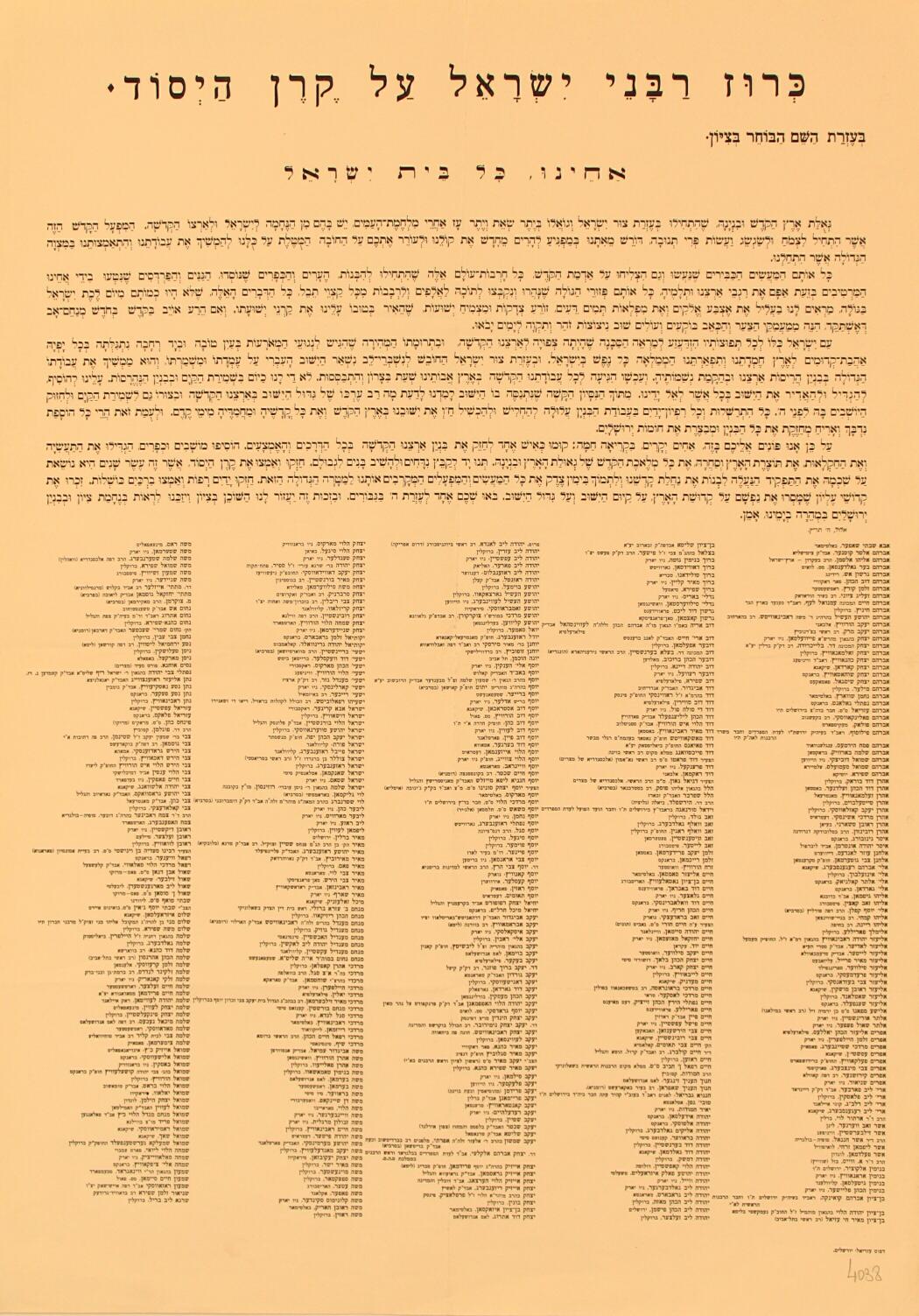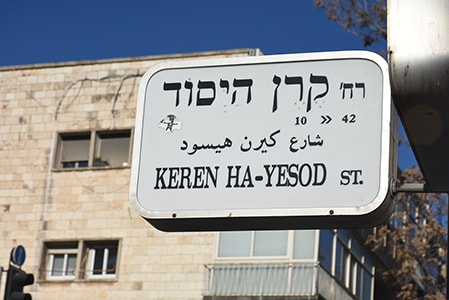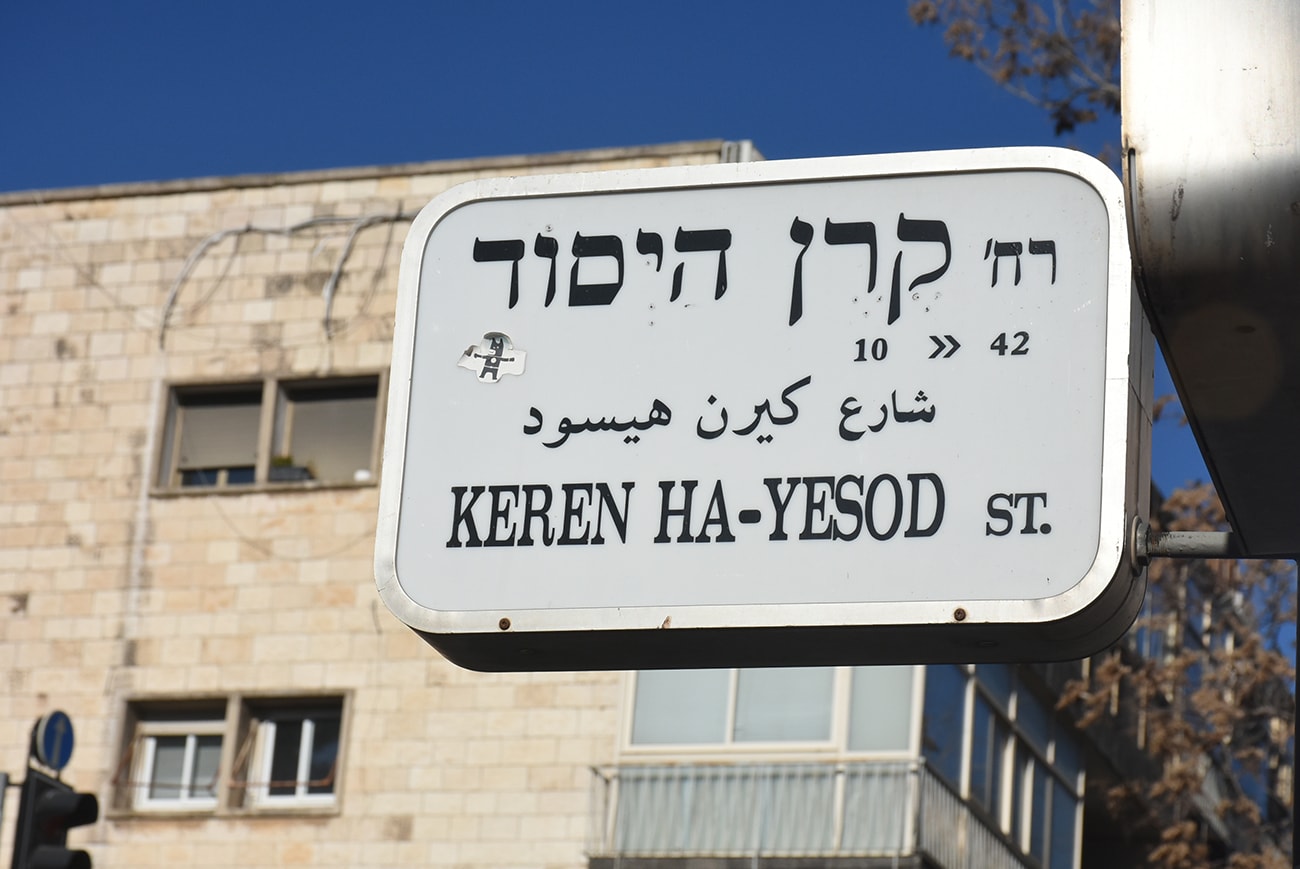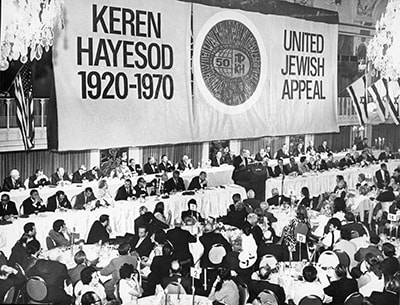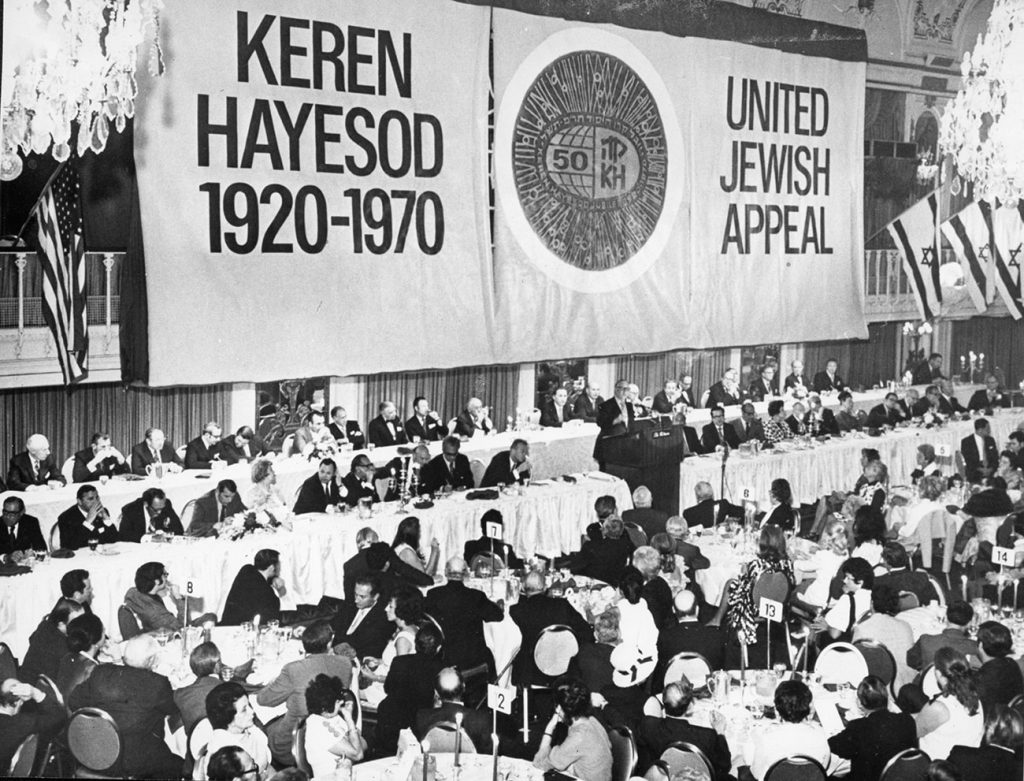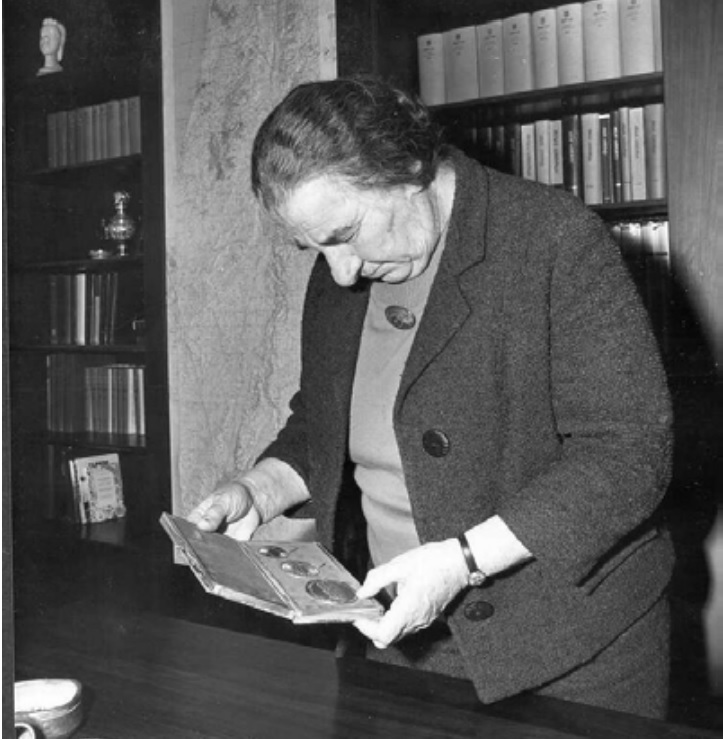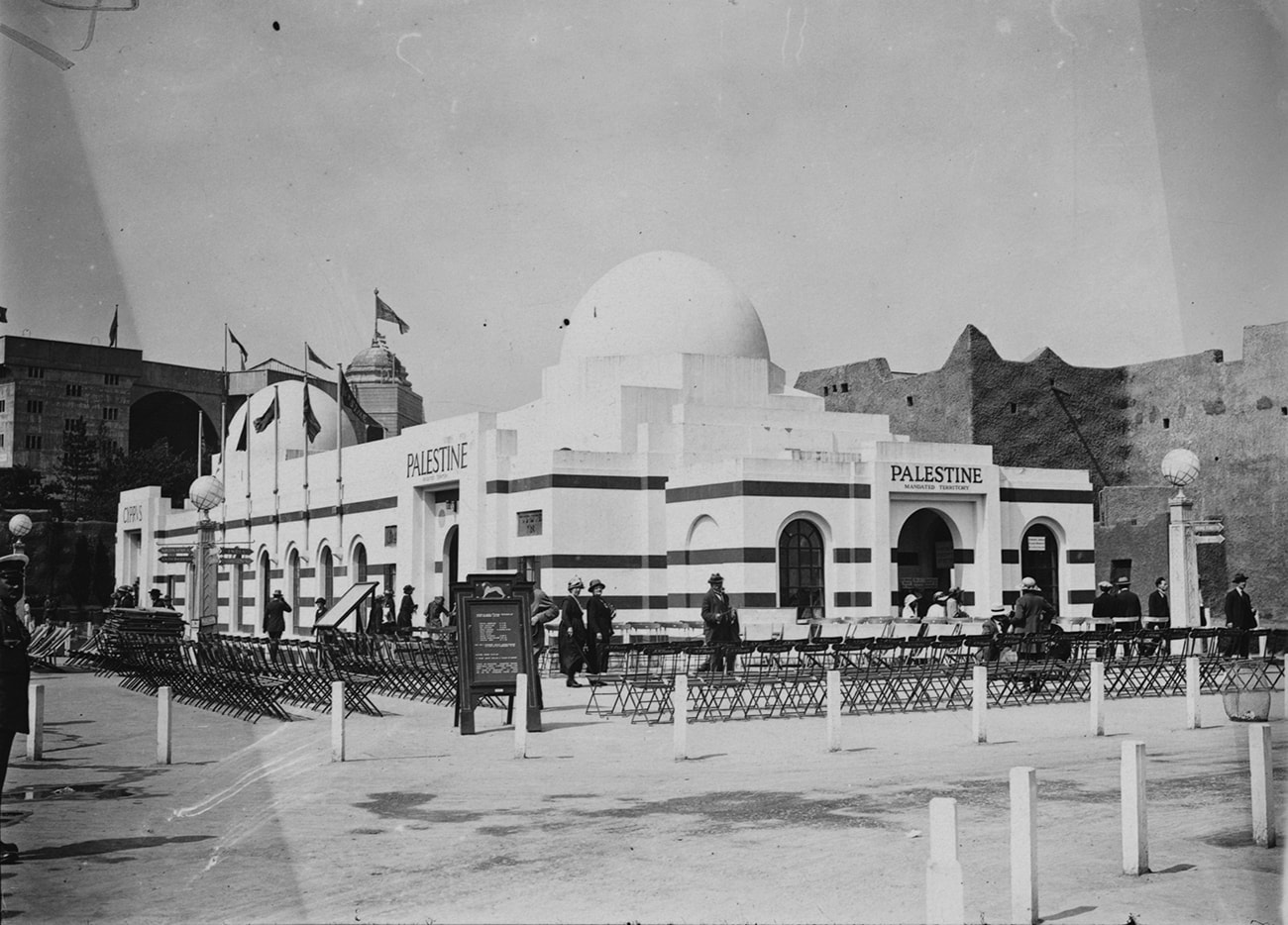
n 1924, the British Empire Exhibition, reviewing the achievements of the colonies, protectorates and mandates ruled by the British, was held in Wembley, England. The dozens of presenters displayed their achievements in the field of economics, culture and folklore. The Palestine-Eretz Israel pavilion aroused considerable curiosity and interest. The Keren Hayesod display was the most prominent and attracted many visitors. The Keren Hayesod exhibit included a vast wall map of the Jewish Yishuv, which showed the lands purchased by the Jewish National Fund and settled with the help of money raised by Keren Hayesod. A model of the workers moshav Nahalal became a major attraction. A booklet, translated into English, Hebrew and Yiddish, told the story of its establishment. Also on display were projects supported by Keren Hayesod: assistance to immigrants, the agricultural experimental station in Tel Aviv, Hebrew education, medical institutions and national non-profit enterprises such as the General Mortgage Bank, which lent money to build houses and neighborhoods in Tel Aviv, Haifa and Tiberias.
Photo: The Palestine-Eretz Israel Pavilion at the British Empire Exhibition, 1924

Photo: Advertisement for the Palestine Pavilion
